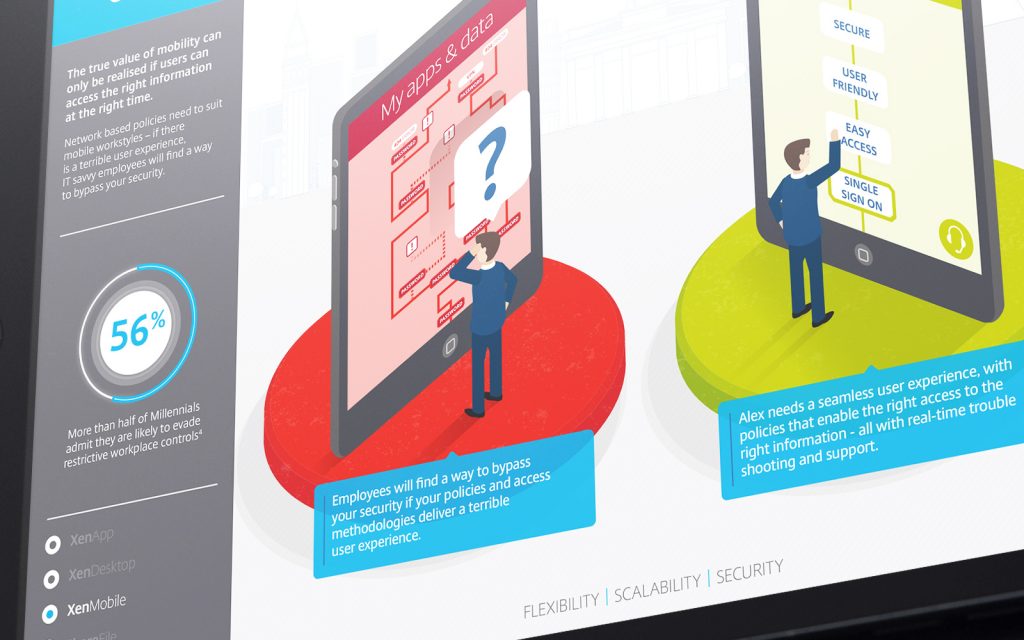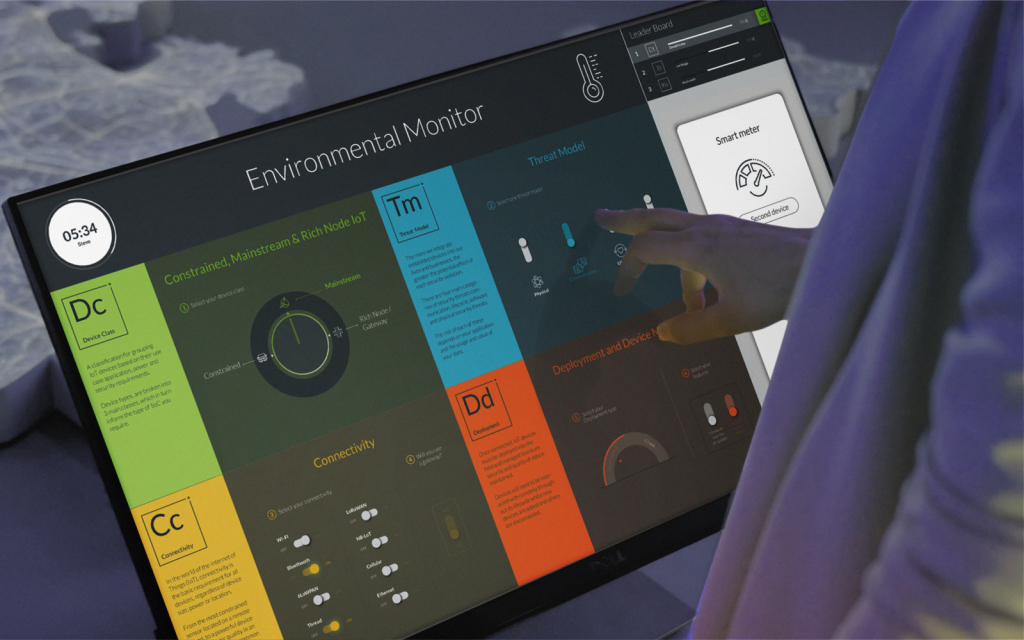Thinking about investing in some sales enablement content for your B2B sales team, but aren’t sure of what you need?
Sales enablement relies largely on ensuring your sales team have everything they need when talking with customers or delivering a sales pitch; from the right training, all the way to delivering the right information at the right time to prospects who need to make an informed decision.
But it’s important to note that not all sales enablement content is created equal. And there are many different types of sales enablement content you might want to consider, depending on your overall strategy and what will work best for your team and most importantly your customer.
As an creative technology business, we specialise in creating interactive customer experiences that are wholly designed to support meaningful sales conversations and bring your brand and value to life for your customers.
That’s why we wanted to discuss some of the different sales enablement content, and how these can be used to your advantage.
Customer-centric web content
Wait a minute… did we just say web content? Yes, yes we did. It may not be the most obvious thing to use for sales enablement, but if you have content on your website that you’re using perhaps as part of content marketing to generate leads and attract organic search traffic to your site that content is more often than not something your sales team can use and have input on, too.
Being able to direct your customers onto a targeted microsite, case study or other content marketing assets can be a great way to introduce them to what you can help them with and start to personalize those messages – and from there, they may even enter your online sales funnel where they can receive more helpful content to nurture them further.
The types of customer-centric web content that can be used for sales enablement includes (but is not limited to):
- Microsites
- Interactive presentations
- Customer journey infographics
- Gamification
- Blog posts
- Case studies
- Premium guides
- Whitepapers
- Sales/landing pages
- Videos
- Automated email workflows
- Competitor comparisons
- Slideshares
- Social media posts
Consider taking stock of the content you already have on your website, and seeing which of your content assets are the most helpful to your customers. If your website is lacking in content assets, perhaps introducing some would help you connect more with your customers online.
Remember, it should all be about your customer, not all about you!

Sales-oriented content
Web content geared towards your ideal customers is one thing, but don’t forget about your sales team! There are numerous types of content that they’ll find helpful, from training sheets right through to sales scripts and detailed product documentation.
Some of the above may also be useful to give directly to your prospects, perhaps during a face-to-face meeting in the boardroom.
Here are some examples of sales-oriented content – some of which you may already have for your team:
- Training sheets and videos
- Interactive presentations (more about these below)
- Sales scripts
- One-pagers
- Detailed product sheets
- Brochures
Again, performing a content audit to see what you already have, what you need, what your customer needs, and what needs improving is a good idea when putting together a sales enablement strategy.
However, it could be the case that some of the aforementioned content would translate well into becoming interactive, which brings us to our next point…
Interactive content
Did you know that 91% of B2B buyers prefer interactive and visual content over static content? Saying that, B2B and B2C aren’t that much different these days, in that no-one really wants to sit through a one-way presentation anymore; they want to have conversations that put them front and centre.

Add to this the fact that digital experiences and technology are fast becoming an expectation, and it is imperative that you should be tailoring your content and delivery to the new customer. Interactive touchscreen experiences and presentation are a great addition to any sales toolkit.
Not to mention, they allow for all of your lovely content to be kept in one easy, accessible place – something that your sales team will definitely appreciate if they’re used to having to trawl through your system in need of the right piece of information.
Some examples of interactive content can include:
- Interactive dashboards
- Presentations
- Gamification
- Videos and stories such as ‘a day in the life’
- Infographics
- Microsites
- Interactive diagrams
- 3D models
- Object recognition (to bring up helpful information when an object is brought near the screen)
We’ve actually just written a blog post containing some of our tips when creating interactive sales enablement content. Check it out!
TIP: To learn more about why interactive content is such an essential part of sales enablement, take a look at our recent blog detailing some of the most compelling interactive content statistics and what they mean for you.
Downloadable content
Whether you’re trying to capture leads online, as part of an interactive sales suite/demo or an interactive experience, downloadable content is important. On an interactive touchscreen or presentation, you can allow prospects to send themselves useful information in exchange for an email address and contact details.
Downloadable content is a key piece of the puzzle when it comes to lead generation, and may include:
- Guides and ebooks
- Checklists
- Videos
- Whitepapers
- Content users have created themselves on an interactive experience
- PDFs
- Surveys
Doing this also means you can track valuable analytics.
Especially if you’re introducing downloadable content as part of an interactive experience or presentation, you can afford to get a bit creative. Just ensure that you’re offering prospects something they’re going to want – whether it’s something educational, thought-provoking, persuasive, as well as useful.
Advice from the interactive sales experience specialists
Regardless of the content you choose to include in your sales enablement strategy, one thing remains true; good content management is key to its success.
After all, keeping all of your content in one easy place – whether that’s via a good CMS or interactive sales tool – will make it easy for your sales team to access and share when they need it.
If you’re unsure of the content that would best fit your sales enablement strategy, or how to go about creating effective interactive sales enablement content, we’d recommend speaking to an interactive agency who specialise in that sort of thing. They should at least be able to offer some no-strings advice.
But whatever you decide to do, remember to get your sales team involved at each stage of the process – as they’re the ones that will have to use your content at the end of the day! They should get a say early on.
One last thing…
Above all else, none of the above is any good unless:
- It’s all about your customer and they have to be at the centre of every piece of sales collateral
- Be personal, generic messages don’t work, you’re not talking to a group you’re talking to individual people our customer
- Be consistent across all your customer touchpoints, it’s no point having amazing tradeshows then the field sales team have rubbish presentations that don’t match
- Analytics, analytics, analytics – track your customer conversations you need to know what they are looking at, what they are interested in so you can refine your messaging and continue to personalize the journey for them.
Want to learn more about what’s possible when creating effective sales content? In that case, get in touch, we promise to reply to your message with something helpful.
Related Posts

How to Update an Interactive Touchscreen from Anywhere in the World
Read

Case Study: How POPcomms can help you develop an interactive solution that stays within budget every time
Read

B2B: What Challenges Can Interactive Customer Experiences Help You Overcome?
Read

6 financial benefits of interactive digital sales enablement tools
Read